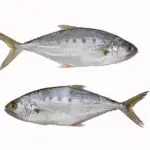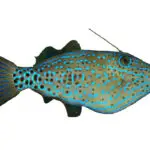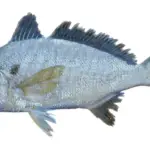Bermuda Chub, or Kyphosus sectatrix, are schooling fish found in subtropical and tropical waters around reefs, rigs, shipwrecks, or in your chum slick.
They are known for their smell and for making a mess on your boat deck. When handled properly, you may be surprised how good Bermucha Chub Fish are actually pretty good to eat.
In this article, I’ll talk you through the taste, how to prepare it, and the best way to cook Bermuda Chub.
Table of Contents
- What Does Bermuda Chub Fish Taste Like?
- How To Prepare Bermuda Chub
- What’s The Best Way To Cook Bermuda Chub?
- Frequently Asked Questions
- Conclusion
- Related Posts
What Does Bermuda Chub Fish Taste Like?
Bermuda Chub does not often rank high on the edible fish list. They have gotten a bad wrap due to their putrid smell upon cleaning. But the truth is most people don’t give them a shot. When properly prepared, and eaten fresh, the Bermuda Chub tastes similar to other soft-textured, saltwater fish, such as the black margate or sea brim.
The cooked meat was bright white and flakey. It had a very familiar mild flavor and much to my surprise did not taste fishy.
The filet was firm, but not steaky. Each bite was tender and smooth, similar to a red drum. There was a welcomed flavor of seafood.
Prior to cooking the filets, the meat looked firm, light gray in color, clean, and not oily.
They reminded me of spadefish filets. Once cooked, the flesh turned to a beautiful white color similar to the mild-tasting fish you’re used to.
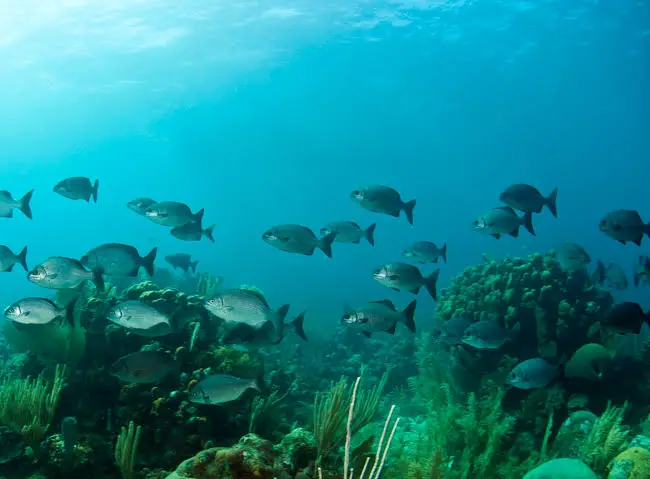
How To Prepare Bermuda Chub
How you handle a freshly caught fish is important for any species, but extremely critical for Bermuda Chub. This is what will make or break your experience at the dinner table.
Bermuda Chub have a reputation for being smelly and pooping all over the deck of the boat when brought onboard. Last time I checked, we didn’t get into fishing because of the good smells, but I digress.
They have a thick bloodline. It is important to slice their gills and let them bleed out immediately. Most of that unappetizing fishy taste we all hate is from the blood.
If you are concerned about the smell ruining your appetite, then take a filet knife and cut out the guts and stomach of the Bermuda Chub before putting it on ice.
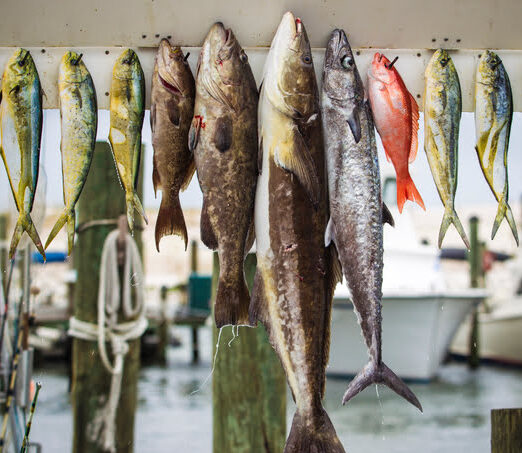
Do You Love Seafood?
This will also allow the fish to cool faster, plus the guts can add to your chum slick. Mixing saltwater into your cooler will help keep the fish extra cold.
Filet the Bermuda Chub like you would any other fish. Go slow as there is always a learning curve with new species.
Once you’ve got your fish fileted and the skin removed, take care of the bloodline. It is the thick red line that runs down the middle of the back of the filet. That is the culprit of the bad smells.
A key tip for any saltwater fish, but definitely for Bermuda Chub is to save some salt water to rinse the filets in. Rinsing the filets in freshwater will make them spoil easier.
What’s The Best Way To Cook Bermuda Chub?
Due to the firmness of the Bermuda Chub filet, it can be prepared using several different cooking methods.
Like most flakey whitefish, Bermuda Chub are excellent pan-fried, deep-fried, and roasted in the oven. Substitute Bermuda Chub into your favorite flakey whitefish recipe.
Bermuda Chub’s mild flavor allows it to be paired with almost anything you’d like to serve with it.
I’m a huge fan of serving this fish alongside a hash that consists of russet potatoes, bell peppers, and onions. You won’t be disappointed serving Bermuda Chub with grape tomatoes, bell peppers, beans, onions, potatoes, or any type of starchy vegetable.
Because Bermuda Chub filets are firmer and more tender than other whitefish, these are great fish to think outside of the box with and incorporate into stews, chowders, and quesadillas. The tenderness of the filet helps absorb any additional flavors in the dish.
My favorite way to cook Bermuda Chub is frying it in a pan. I like to keep it simple, especially if I am trying something new. I knew pan frying it with some simple spices would allow me to give this fish its just due.
The first time I cooked Bermuda Chub, I seasoned the filets with salt, pepper, and garlic powder. I dusted the filets with flour and then put them in a hot pan with melted butter.
It took about 2 minutes per side and because of how white the filets get when cooked it was easy to tell when they were done.
Bermuda Chub also works great with blackening seasoning, beer batters, lemon pepper, and citrus.
Frequently Asked Questions
What Do Bermuda Chub Look Like?
Bermuda Chub have an elliptical, but compressed body shape. Their color is mainly silver with a mix of blue and gray.
They have pale yellow stripes, dark fins, and beaked mouths with teeth. Be careful of their dorsal fin as it has several spines. They look like a mix between a spadefish and a piranha.
What Do Bermuda Chub Eat?
Bermuda Chub eat algae, seagrass, mollusks, small crustaceans, and anything in your chum slick.
Why Do Bermuda Chub Have a Bad Reputation?
Bermuda Chub get a bad wrap because they tend to poop all over the deck of the boat when brought on board.
The smell of their innards is also off-putting. Scientists have also documented these fish eating the feces and vomit of spinner dolphins.
Conclusion
Bermuda Chub are abundant, easy to catch, and a fun fighting fish on light tackle. And in my opinion, are a wildly underrated fish for the dinner table.
Handle this fish properly and you might just like it.

Growing up in Florida, I’ve been surrounded by saltwater my entire life…and I love sharing my passion with others.
To learn more about why I started Saltwater Mecca, visit the ABOUT page.
Thank you for reading this article. Browse around & have some fun!

